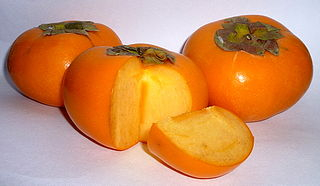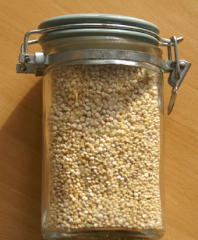This morning as I was cutting up a persimmon, one of my workmates came over and, apologising for asking a stupid sounding question, asked what it was that I was cutting up. I don’t think it’s a stupid question at all – if you don’t know what something is, trying to find out is admirable. But it made me think about why someone wouldn’t recognise a persimmon (not just not know what it was called or where it came from, but have literally never seen one before).
I know about persimmons because I spent a year in South Korea teaching English when I finished university, and they’re often included on fruit platters there as well as being widely available in supermarkets and local grocery stores. They’re a well-known fruit in east Asia, which is where the persimmon tree is from. For those who might be curious, a persimmon (a non-astringent Fuyu type persimmon – the astringent ones are slightly different) is crunchy like a firm nectarine, with a flavour somewhere between a sweet apple, a peach, and rock melon (cantaloupe), with a hint of a cinnamon. They’re delicious. There’s no core, and generally no seeds, and you can eat the skin or peel them.
There are so many domesticated plant and animal species which we use for food, and yet the average diet of the average person in an industrialised country is very limited. I’m unusual in the variety of foods I eat, and I don’t have access to even a quarter of the edible things I’ve read about.
I really feel that we need to start branching out in our eating habits. I know that a lot of people have the Crocodile Dundee opinion (said of roast goanna: “tastes like shit, but you can live on it”) of unusual foods or foods that have been popular with native peoples and are not (yet) mainstream – but many if not most of those foods are valuable sources of nutrients, and tasty. Look at quinoa; eaten for centuries by the people of South and Central America, relegated to “poverty food” because of its association with the native culture after European colonisation, and now it’s a high value health food and increasingly looks like one of the best staple foods we have available to us, with more protein and minerals than rice or wheat.
How much would the world change if we made better use of our domesticated species? We domesticated them for a reason, after all.
Images sourced from Wikimedia Commons:
File:Threekakifruit-cutopen.jpg
File:Chinoa_from_Bolivia.jpg

